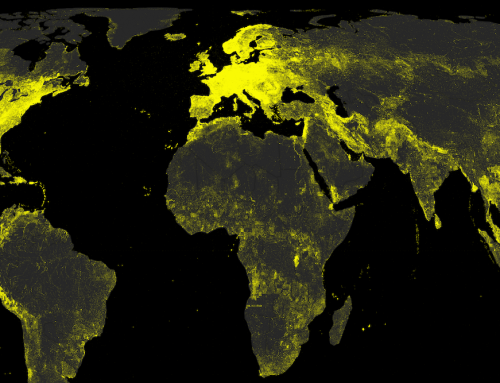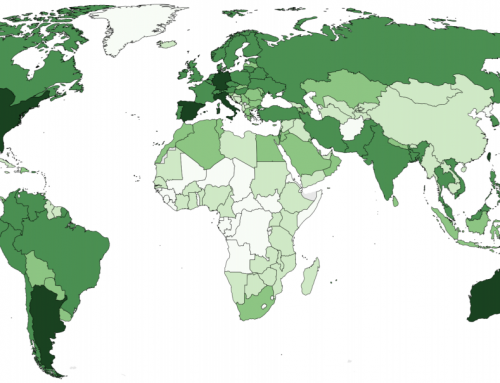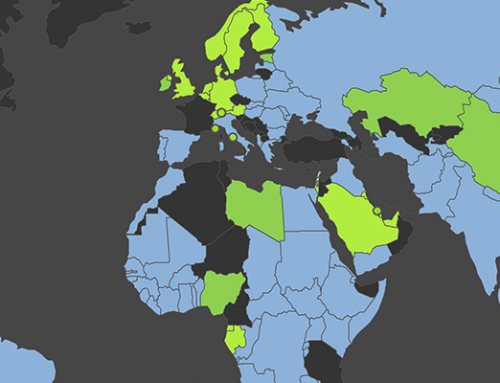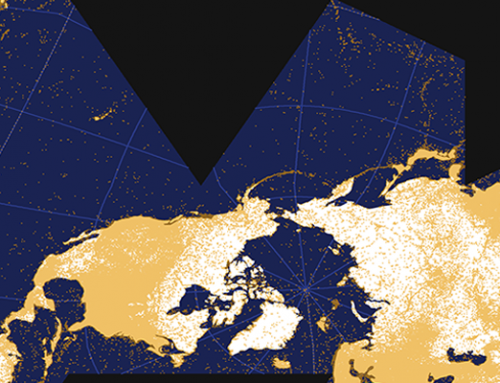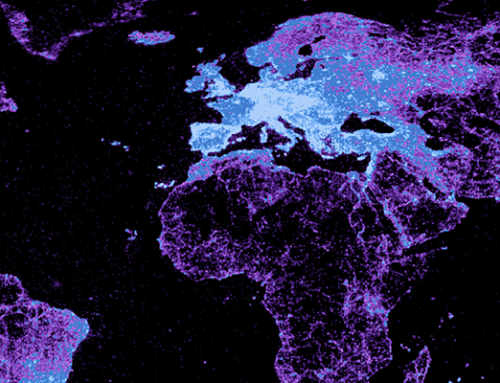(Click to see full image)
Wikipedia is by far the world’s biggest and most used encyclopedia, and 1600 times larger than Encyclopedia Britannica. 15% of all Internet users access it on any given day. It exists in 282 langauges; 40 of those language versions have over 100,000 articles, and the English one alone contains close to four million.
Data
Each point on the map indicates one English Wikipedia article that has been geotagged. Not all articles are geotagged, but almost all articles about events and places tend to be. The data in this map were all taken from November 2011 Wikipedia data dumps. Our project team wrote a script to search for coordinate representations in every article (taking into the varying ways in which geo-coordinates are expressed). We improved the quality of our coordinates by doing things like eliminating or fixing erroneous coordinates, grabbing coordinates (where sensible) from not just structured infoboxes, and making sure to remove irrelevant coordinates (Wikipedia actually contains a lot of coordinates for extra-terrestrial entities like lunar craters!).
Findings
The almost 700,000 points on this map represent an incredible human effort that has gone into describing some aspect of a place. The density of this layer of information over some parts of the world is astounding. There is clearly a lot of unevenness in the amount of content about places, and large parts of our planet are still invisible from these digital augmentations, but it is still hard not to be awed by this cloud of information about hundreds of thousands of events and places around the globe.
